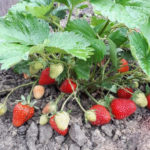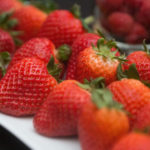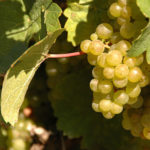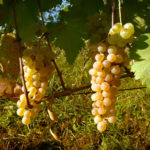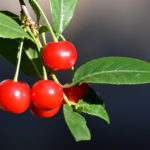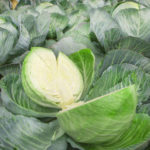Kiwi potato variety
Kiwi is a fairly rare but very popular late-ripening potato variety (Solanum tuberosum). It was bred in the 90s in the city of Zhukov, Kaluga Region, as a result of amateur selection. Has not passed state tests and is not included in the state register of plants of the Russian Federation. But this does not prevent Kiwi from attracting more and more attention of gardeners, because few varieties can boast of such resistance to diseases and pests! In addition, this potato is suitable for cultivation practically throughout the entire territory of Russia, as well as in neighboring countries. Most often it is found in the middle zone of the Russian Federation and in the Kuban.
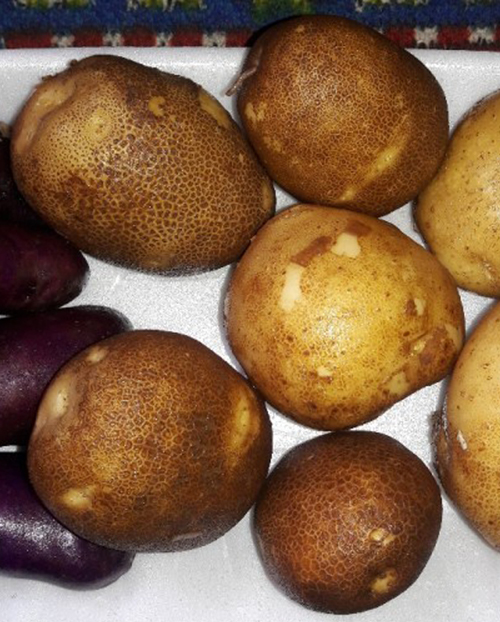
The period from full germination to harvest is 120-130 days. Climatic conditions, as well as soil moisture, have a significant influence on the ripening time.
Plants are quite tall, they can reach 40-80 cm, depending on the composition of the soil. The main stem is erect, with a large number of lateral stems, abundantly covered with leaves. The leaf plate is elongated, with serrated edges, covered with many subtle hairs, rough to the touch. The color of the leaves is green with an emerald tint. The inflorescences are lush, have a bright lilac color.
Tubers are elongated in shape, with rounded edges. The skin is mesh, rather thin, rough to the touch, has a yellow color. The flesh on the cut is white, with an amber sheen, very firm. It is noteworthy that the tubers of this variety grow relatively equal in size, while there are practically no small ones. Also a feature of Kiwi is the increased content of dry matter and fiber in the tubers. The yield is good - with 1 kg of planting material it is possible to get 20 kg of potatoes. According to the observations of gardeners, the average yield per plant is about 3-4 kg, from 100 sq. m - about 550-600 kg.
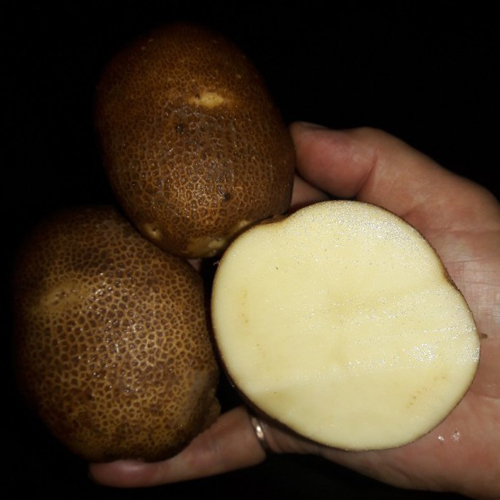
The variety has some features of its use in cooking. When cooking, the pulp is well boiled, has a crumbly structure, while the tubers retain their shape, but they will have to be cooked for a long time - more than 40 minutes. For frying, these potatoes are poorly suitable, since due to the high content of dry matter in them, they burn. Taste qualities are average, one might even say "for an amateur" - the middle of the tuber has practically no taste. Thus, Kiwi is great for mashed potatoes, first courses and salads. It should also be said that this potato has a good keeping quality and does not lose its taste during a year of storage.
The variety is undemanding to growing conditions, it can grow on different types of soils, in different climatic conditions. It does not require increased attention to itself and is completely simple in agricultural technology, which makes it attractive for novice gardeners. But there is one caveat: Kiwi is a rather rare variety, so the price of one kilogram of planting material can be quite high.
Below are some of the agronomic aspects of growing that will help you get the most of your crop:
- planting potatoes is recommended to be carried out by the Dutch method, while leaving gaps between the ridges of at least 70 cm, between the planted tubers at least 30 cm;
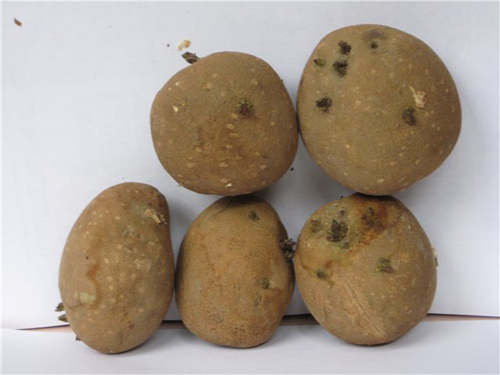
- with the standard method, planting is carried out according to the scheme 45 × 90 cm;
- do not forget to observe the crop rotation - the best predecessors of potatoes are legumes, cucumber, cabbage, beets, onions and garlic, as well as green manures;
- as needed, watering and fertilizing plantings, as well as loosening the soil and weeding should be carried out;
- due to the resistance of the variety to damage by pests and diseases, preventive treatments are not required.
The last point deserves special attention. Kiwi is resistant to such common potato diseases as late blight, cancer, alternaria, scab, phomosis, rhizoctonia, rot, fusarium and verticillary wilting. Also, this variety is rarely eaten by the Colorado potato beetle and wireworm.Due to such a large set of invulnerabilities, Kiwi became known as a genetically modified organism (GMO) and in the circles of amateur gardeners began to be considered unsafe. But in fact, it is possible to obtain plants with such a wide range of resistances with the help of ordinary breeding. By the way, back in the 50s in the USSR, work was carried out in this direction. The principle of breeding such invulnerable varieties was based on crossing cultivated potatoes with wild ones. At first, this event was not successful - the taste of the tubers deteriorated greatly, sometimes even to the point of being completely inedible. But over time, breeders have learned to reduce this negative effect.
When it comes to pest resistance, the explanation is quite simple. First, as mentioned earlier, Kiwi leaf plates are covered with a large number of hairs, which is why the Colorado potato beetle cannot lay eggs on them. Secondly, the leaves contain an increased amount of fiber, which pests cannot digest in such a large amount. By the way, the high fiber content is the result of simple selection.
Thus, the variety is absolutely safe and clearly deserves attention. Despite its rather low taste, it has many advantages and is appreciated by gardeners for its high yield, unpretentiousness and resistance to diseases and pests.
